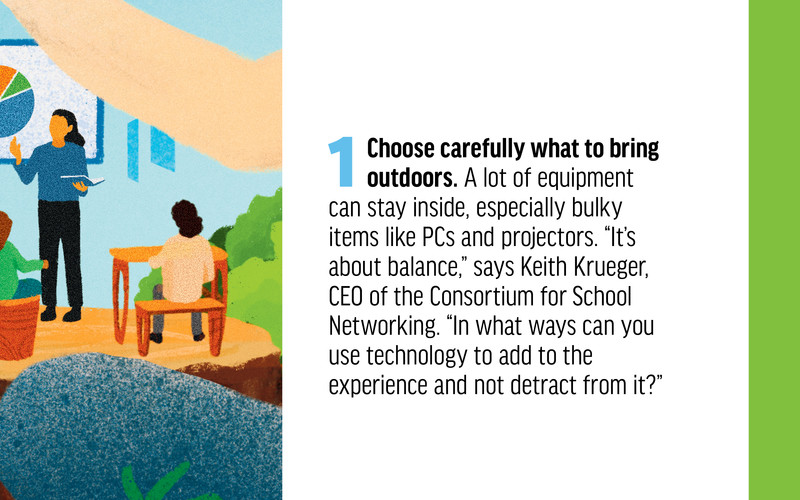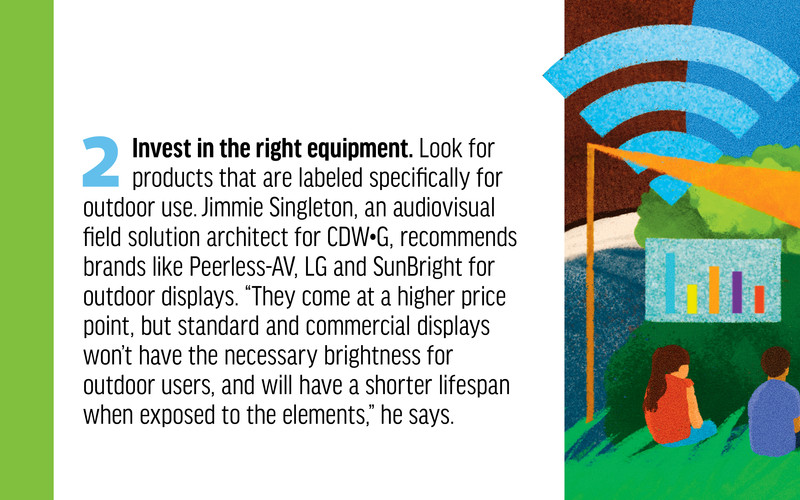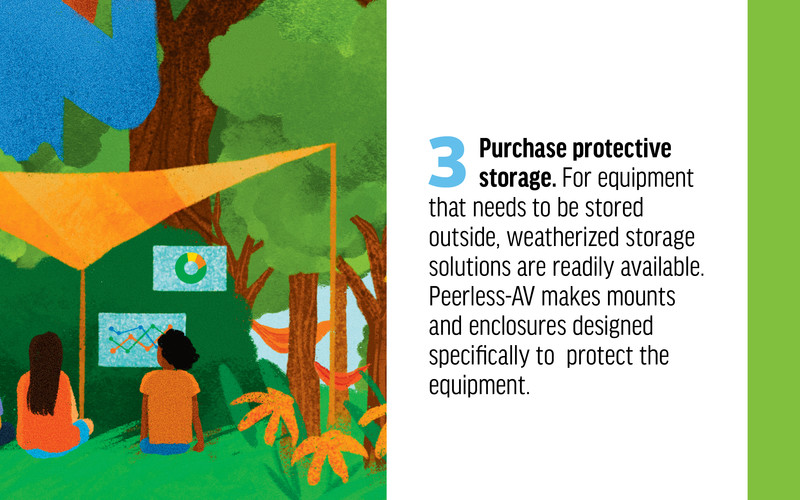In an article for Outside, Sharon Danks, CEO of Green Schoolyards America, notes that during the pandemic, thousands of schools in the U.S. moved classes outdoors and are planning to make outdoor spaces a long-term part of teaching and learning.
Technology and Grants Get Schools Started with Outdoor Learning
Thanks to a mix of private, state and federal grants, many schools are dipping their toes into outdoor learning programs this year.
“During the pandemic, we wanted kids to have the ability to go outside and take their masks off for a while,” says Brian Engle, assistant superintendent of instructional innovation at Glenview School District 34 in Illinois. The Glenview Education Foundation, a community-run nonprofit, provided funds to purchase multiple mobile stations with yoga mats, chairs and whiteboards for teachers to check out and roll outdoors.
Students have their own learning devices through the district’s one-to-one program, so to extend the Wi-Fi signal, the district installed Aruba wireless access points outside each school building.
Further to the north, Novi Community School District, located in a suburb of Detroit, is also getting started, and has big plans for its nearly 7,000 K–12 students in nine schools. While the district already had several community gardens, this year, with funding from a local business, one school installed a hammock garden, a serene spot where students can read, dream and relax.
The district has plans to expand its outdoor classrooms within the next two years. With a recent $400,000 grant from the state of Michigan, the district plans to add solar-powered greenhouses to five of its elementary schools.
WATCH NOW: Students with disabilities explore tech skills in hydroponic greenhouses.
RJ Webber, assistant superintendent at Novi, also wants to earmark funds for outdoor-focused science, technology, engineering and math (STEM) initiatives.
“Taking technology into nature can seem counterintuitive. But the goal is to use technology to share and amplify what we can learn outdoors,” Webber says.
His vision includes projects that use coding, programming and 3D design. Outdoor cameras will help students observe nature when it’s too cold to go outside, and sensors can measure soil moisture.
















